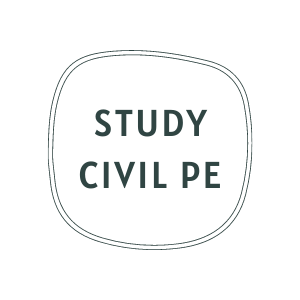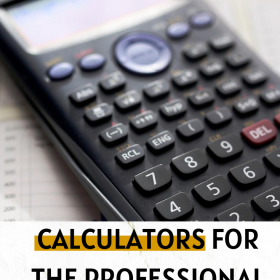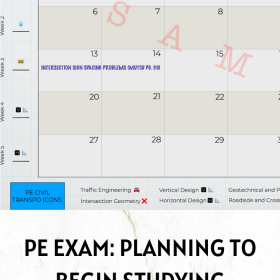I personally know the feeling of being overwhelmed by all of the design standards and specifications when preparing for the PE Civil Transportation Exam. Some of the questions I had during that time may be similar to yours now.
- Do I need to bring all of these references to the exam?
- Which ones are most important?
- Which one should I use for “X” type problems?
- How can I quickly find solutions?
And many more questions similar to those.
This is where I come in! Below I will summarize my suggested 4 “must-have” references to bring on exam day! If you plan to take the PE Civil Transportation Exam check out the info below.
A Policy on Geometric Design of Highways and Streets, 7th edition, 2018
Topics from the transportation depth Sections II, III, & IV (Horizontal Design, Vertical Design, & Intersection Geometry, respectively) make up 12 of the 40 questions on the afternoon portion of the exam.
That’s a huge chunk of the afternoon exam, 30% to be exact! All of the topics within those sections involve the A Policy on Geometric Design of Highways and Streets, 7th edition, 2018 (including October 2019 errata).
Within the field of transportation engineering, this book is commonly referred to as “The Green Book”.
In my opinion this book is definitely a must-have!
There will certainly be questions where you’ll need to refer to tables, charts, or graphs in this book to obtain values needed to solve those particular questions.
Some examples of questions where this book would be needed:
- Horizontal/Vertical design questions involving sight distance
- Questions involving determining the minimum radius using superelevation tables
- Questions using graphs to find the appropriate grade effect on large vehicles.
Manual on Uniform Traffic Control Devices, 2009
When it comes to traffic control, signals and signage, this manual is a “one stop shop”. NCEES lays out signal warrants, signs and pavement markings as well as temporary traffic control in the exam specifications. Not many resources specifically target the MUTCD for use on the PE exam.
It’s particularly important to familiarize yourself with the structure of the book. It’s broken down into nine parts with each part having a page color that corresponds to the topic. i.e. Part 1 – General Notes (Light Blue Section). It also uses a section format and lists certain topics as either standard, support, or guidance. It’s very wordy and some possible qualitative questions can be presented in an unclear manner.
You can find the book in web pdf format here.
Roadside Design Guide, 4th edition
The Roadside Design Guide is filled with pictures and diagrams that are clearly displayed throughout. As with this and other references on this list, quickly finding the correct figure or table can be a daunting task.
NCEES has the approximate number of questions from the section on roadside and cross-section design at four. The reason I included this as a “must-have” is based on the possible overlap with other topics that do not explicitly fall in this category. For example, you can have a crash safety related question disguised within another question or clearly a crash safety related question that needs some sort of clear zone schematic from this guide to obtain the correct solution. The index and glossary are also key in this one.
Qualitative or lookup type problems can surly come from this guide and it’s on the thinner side (considering number of pages) in comparison to the others on this list!
Highway Capacity Manual, 6th Edition
The Highway Capacity Manual (HCM) 6th Edition is a fairly new design standard to the PE exam. The previous edition was the HCM 2010. Like “The Green Book” mentioned earlier, this manual has topics that make up a significant percentage of the afternoon topics. There is also a bevy of specifications that directly correlates to this manual.
From signal timing, to intersection capacity, to traffic analysis, a wide range of topics and questions will rely on the HCM’s usage for solutions on the exam. This manual also features some of the most cumbersome and lengthy formulas that you’ll hopefully recognize if you need to use any on exam day!
The manual is broken down into four volumes. You’ll only need to focus on the first three, with the fourth volume being an applications guide containing supplemental material.
Since you are taking the transportation depth option, you may be entering the transportation engineering workforce so this book will be second nature to you in the future! For now, get familiar with the chapter contents as a lot of those titles use keywords to help you determine where to look for that special formula.
Multimodal facilities are very important and so are roadway capacities. These topics will definitely show up on the exam in some shape or form.
So that’s the list!
There are many applications of these design standards where questions can be generated from and used as questions on the exam. Some of the problem solutions can be simple “lookups” found using the index. Other solutions may take some time to find depending on how familiar you are with the particular book.
I found it beneficial to tab the topics that are listed on the NCEES exam specifications list. I strongly suggest tabbing each book by important topics and color coding the tabs by those topics for easy reference. Also, while working through practice problems it’ll probably be a good idea to tab and highlight certain sections in the book that were used to solve the problem.
You got this! I’m excited to help you meet your goal of becoming a professional engineer!
Disclaimer: These are my recommendations on which materials to bring from the NCEES design standards. Sure, there are other materials (Civil Engineering Reference Manual (CERM), practice problems, notes, etc.…) you’ll need to bring, but this list is just focusing on the design standards given by NCEES. These manuals can be very pricy, so I’ve pointed out the absolute must haves. If you can, really try to bring all the free ones which may require a lot of printing, but totally worth it if it helps you answer some questions correctly. If you can borrow any or all of these, do that. Whichever ones you decide to bring, one caveat would be to familiarize yourself with the table of contents and the charts and graphs in each. You don’t want the exam day to be the first time you open the book!
To help in your preparation to begin studying, I created a PE exam focused planner that can be used to keep you on track from the beginning. The planner features a five month calendar as well as PE exam topic breakdowns and a quick formula conversion sheet.










Jacob
I was interested in the free preview of the course
studycivilpe.com
Hello Jacob! Thank you for the inquiry. Unfortunately, the course is not currently open for enrollment. I have updated the post on the website. For more up to date test taking resources follow @studycivilpe on instagram or @studycivilpe on facebook.
Thanks Again!